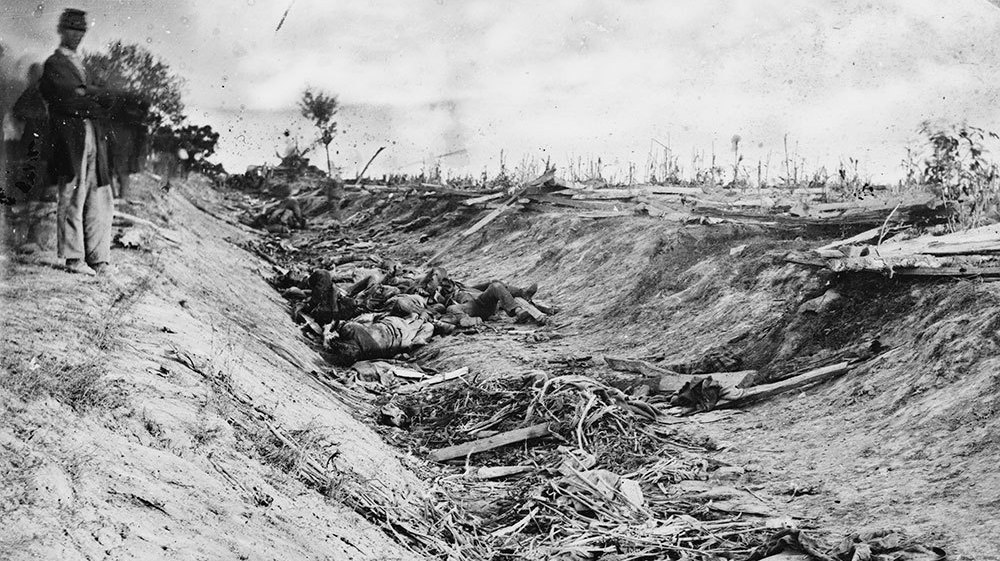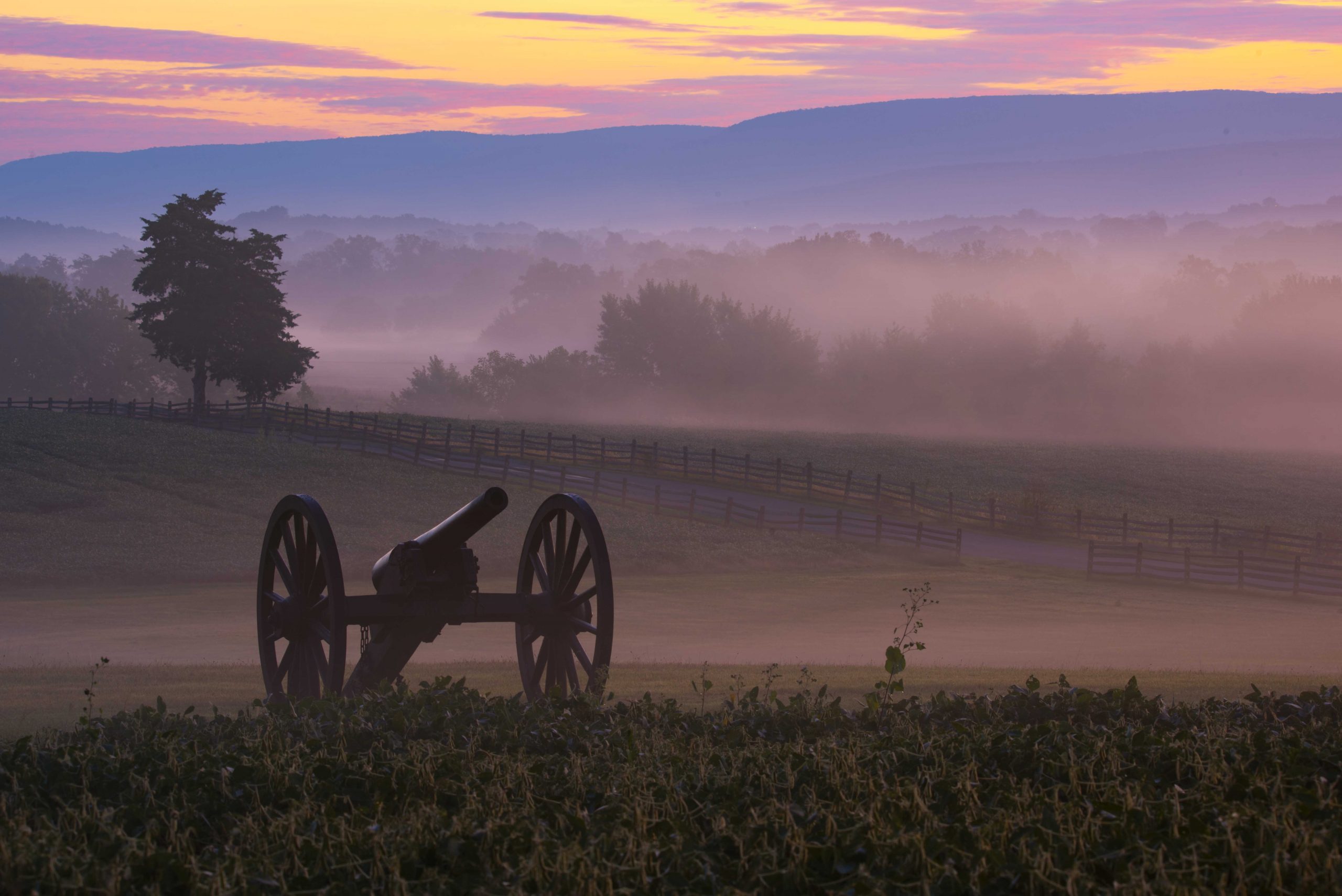Fighting in Slippers: Longstreet at Antietam

In September 1862, Confederate Gen. Robert E. Lee led the Army of Northern Virginia across the Potomac River and into Maryland for the first time. It was an effort to capitalize on a summer of stunning Confederate successes in the Eastern Theater, spanning from the Shenandoah Valley to the James River Peninsula to northern Virginia. By bringing the war on to Northern soil, Lee could at least give Virginia civilians some breathing room, while potentially reaping significant political benefits if he could continue his string of victories.
But the campaign hardly went according to Lee’s plan. By mid-September he found himself backed up against the Potomac River, his army depleted by a summer of fighting and hard marches, facing a considerably larger Army of the Potomac commanded by Maj. Gen. George McClellan.
On the morning of September 17th, McClellan began attacking the left of the Confederate line. The battle swung back and forth for hours as the badly outnumbered Confederates poured more and more troops into the fray. Throughout the battle Lee, along with Confederate Major Generals James Longstreet and Thomas “Stonewall Jackson”, scrambled to move troops to threatened areas, taking advantage of interior lines and McClellan’s disjointed attacks.
By one estimate, three-quarters of the Confederate army had already been engaged by noon, and many of those units had suffered extreme casualties. It was a desperate defense by the Army of Northern Virginia, but by mid-day, Lee was out of reserves to call on. While the situation on the left had stabilized, repeated Union attacks overcame resistance at the infamous Sunken Road, and the center of the Confederate line teetered on the brink of collapse.1

At this desperate moment Longstreet and his staff came across two guns of the Washington Artillery whose crews had been killed or wounded. After the war, Major Gilbert Moxley Sorrel of Longstreet’s staff wrote:
“The gunners had fallen by their places, which were temporarily without cannoneers. Longstreet was with us. Fairfax, Goree-Manning, Walton, myself, and perhaps some others took our horses’ bridles as we leaped from them to the guns. The position was most important and it would never do for those ‘barkers’ to be dumb, even for a minute; so at it we went, the improvised gunners, and were afterwards cheered by being told we did it well and could always get a gunner’s berth when we might want it. I had the rammer No. 1, I think it is in the drill. Our fire was really strong and effective, until some reliefs from the Washington Artillery came up ‘ventre a terre,’ and with hearty shouts took their guns in hand. The enemy opened a severe fire on us, but fortunately none of our party was hurt. We mounted again with cheerful grins at our sudden adventure, and Longstreet, much pleased, turned his attention to other points.”2
Longstreet’s own description of these events in his memoirs is noticeably less vivid. “Sergeant Ellis thought that he could bring up ammunition if he was authorized to order it. He was authorized, and rode for and brought it. I held the horses of some of my staff who helped to man the guns as cannoneers.”3
Along with the guns manned by Longstreet and his staff, the gap was filled by a few hundred scattered infantry from a mix of units — some demonstrating in line of battle but without any ammunition — and a handful of other cannon. Even Confederate Maj. Gen. D.H. Hill picked up a musket. This scratch force succeeded in holding off the final Union attack in this particular sector. The fighting moved further to the right toward what we now know as Burnside’s Bridge, and the Army of Northern Virginia managed to hold on until nightfall.4

Even more remarkably, Longstreet was fighting this battle with an injured heel that kept him from wearing a riding boot. Instead, he fought in a “wobbly carpet slipper” — a detail he was annoyed by at the time, and noticeably left out of his memoirs.5
These very human moments are part of what I’ve always found so compelling about the Civil War. There is a yawning gulf between weighing these events from the comfort of our homes, versus having to act in the heat of the moment. Mentally moving troops on a map from an armchair is a world apart from having to convey orders through the smoke and noise and chaos of 19th century combat, or marching across the actual terrain, or overcoming any number of obstacles that Clausewitz so neatly summarized as “friction.”
These events were lived by real people, in complicated and ugly circumstances. It’s something we always need to keep in mind as we study history … and I don’t know a better way to remember that than by picturing General Longstreet, in a slipper, holding his staff’s horses while they man a cannon at a critical moment in one of the war’s largest battles.
1. Slotkin, Richard. The Long Road to Antietam: How the Civil War Became a Revolution. Liveright. 2012. 311.
2. Sorrel, Gilbert Moxley. Recollections of a Confederate Staff Officer. The Gutenberg Project. 2016. 113.
3. Longstreet, James. From Manassas to Appomattox: Memoirs of the Civil War in America. Da Capo Press, 1992, 250.
4. The War of the Rebellion: A Compilation of the Official Records of the Union and Confederate Armies, 128 vols. (Washington, DC, 1880-1901), Series 1, vol. 19, part. 1, pages 150, 850, 1026.
5. Sorrel, 103.
I was aware of General Longstreet’s involvement with the Washington Artillery, but this post adds a new dimension to the story.